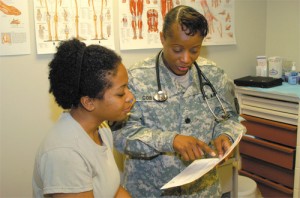For the last 15 years, the Joint Commission (formerly JCAHO) has been evaluating medical errors and their causes and using this data to improve patient safety standards. What it has found is that hand-off communication has played a role in approximately 80 percent of “serious preventable adverse events,” also known as sentinel events, in healthcare.
In 2006 the Joint Commission initiated National Patient Safety Goals, which changes emphasized goals on a yearly basis. These standards grew out of the recommendations of the Sentinel Event Advisory Group and target issues that most commonly lead to sentinel events. For 2011, Goal 2 focused on improving communication among caregivers since communication errors and breakdowns remain a leading cause of sentinel events.
Hand-off communication can be especially problematic, for several reasons such as one person is often at the end of their shift and wanting to go home, or a patient is being bumped up to a higher level of care and the care provider has already been under stress and strain from the patient’s more serious needs. Important details that are vital to the patient’s current state and treatments may be missed or misunderstood due to the stress of the situation and fatigue of the caregiver.
One method of improving the odds of giving and receiving a more thorough report has been for the oncoming nurse to perform an immediate baseline assessment to confirm the hand-off report. This method can take time and hold up an outgoing nurse from leaving the facility, which means that she must remain on the clock until the assessment is finished. Most facilities have strict time limits on end-of-shift overage minutes.
Another method that has been gaining ground is the hand-off sheet used in many facilities when transferring patients between units. Although a seasoned nurse knows if she’s is likely to have all the information she needs, a newer nurse may want the security of a completed hand-off sheet. Although nurses offer mixed reviews of the extra paperwork, a benefit is that the communication is documented.
Some nurses prefer the “walking report” where the off- and on-going nurses walk from room to room and give a hallway report outside the patient’s room. This allows a quick review of the nurses’ notes and the chart, and a quick visit with the patient. Other nurses feel this invites interruptions from family members, and patient requests that cannot be handled until after hand-off has been completed.
In school, nurses learn the quick 30-second head to toe assessment. While this method is a goal, in school most students only have one or two patients for their ‘shift.’ In the real world of nursing what works best is often found only through evidence-based practice and a lot of talking to other nurses to find out what works best for them.



